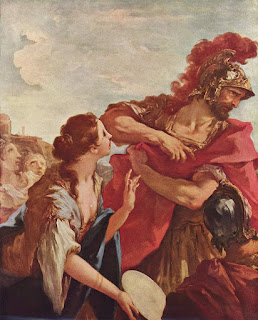The Anglo-Catholic, Tractarian, Pre-Raphaelite poet Christina Rossetti died on December 29, 1894. The Poetry Foundation describes her religious and poetic inspirations:
Caught up in the Tractarian or Oxford Movement when it reached London in the 1840s, the Rossettis shifted from an Evangelical to an Anglo-Catholic orientation, and this outlook influenced virtually all of Christina Rossetti’s poetry. She was also influenced by the poetics of the Oxford Movement, as is documented in the annotations and illustrations she added to her copy of John Keble’s The Christian Year (1827) and in her reading of poetry by Isaac Williams and John Henry Newman. For more than twenty years, beginning in 1843, she worshiped at Christ Church, Albany Street, where services were influenced by the innovations emanating from Oxford. The Reverend William Dodsworth, the priest there until his conversion to Catholicism in 1850, assumed a leading role as the Oxford Movement spread to London. In addition to coming under the religious influence of prominent Tractarians such as Dodsworth, W. J. E. Bennett, Henry W. Burrows, and E. B. Pusey, Rossetti had close personal ties with Burrows and Richard Frederick Littledale, a High Church theologian who became her spiritual adviser. The importance of Rossetti’s faith for her life and art can hardly be overstated. More than half of her poetic output is devotional, and the works of her later years in both poetry and prose are almost exclusively so. The inconstancy of human love, the vanity of earthly pleasures, renunciation, individual unworthiness, and the perfection of divine love are recurring themes in her poetry.
As this site shows, she wrote several poems for Advent and Christmastide, through to Candlemas, the traditional end of the 40 days of Christmas. One of the most familiar is called "A Christmas Carol" but we know it as "In the Bleak Midwinter":
In the bleak mid-winter Frosty wind made moan, Earth stood hard as iron, Water like a stone; Snow had fallen, snow on snow, Snow on snow, In the bleak mid-winter Long ago. Our God, Heaven cannot hold Him Nor earth sustain; Heaven and earth shall flee away When He comes to reign: In the bleak mid-winter A stable-place sufficed The Lord God Almighty Jesus Christ. Enough for Him whom cherubim Worship night and day, A breastful of milk And a mangerful of hay; Enough for Him whom angels Fall down before, The ox and ass and camel Which adore. May have gathered there, Cherubim and seraphim Throng'd the air, But only His mother In her maiden bliss Worshipped her Beloved With a kiss. What can I give Him, Poor as I am? If I were a shepherd I would bring a lamb, If I were a wise man I would do my part,-- Yet what I can I give Him, Give my heart.
Remember that today is also the feast of St. Thomas a Becket, and of Blessed William Howard, martyrs.










